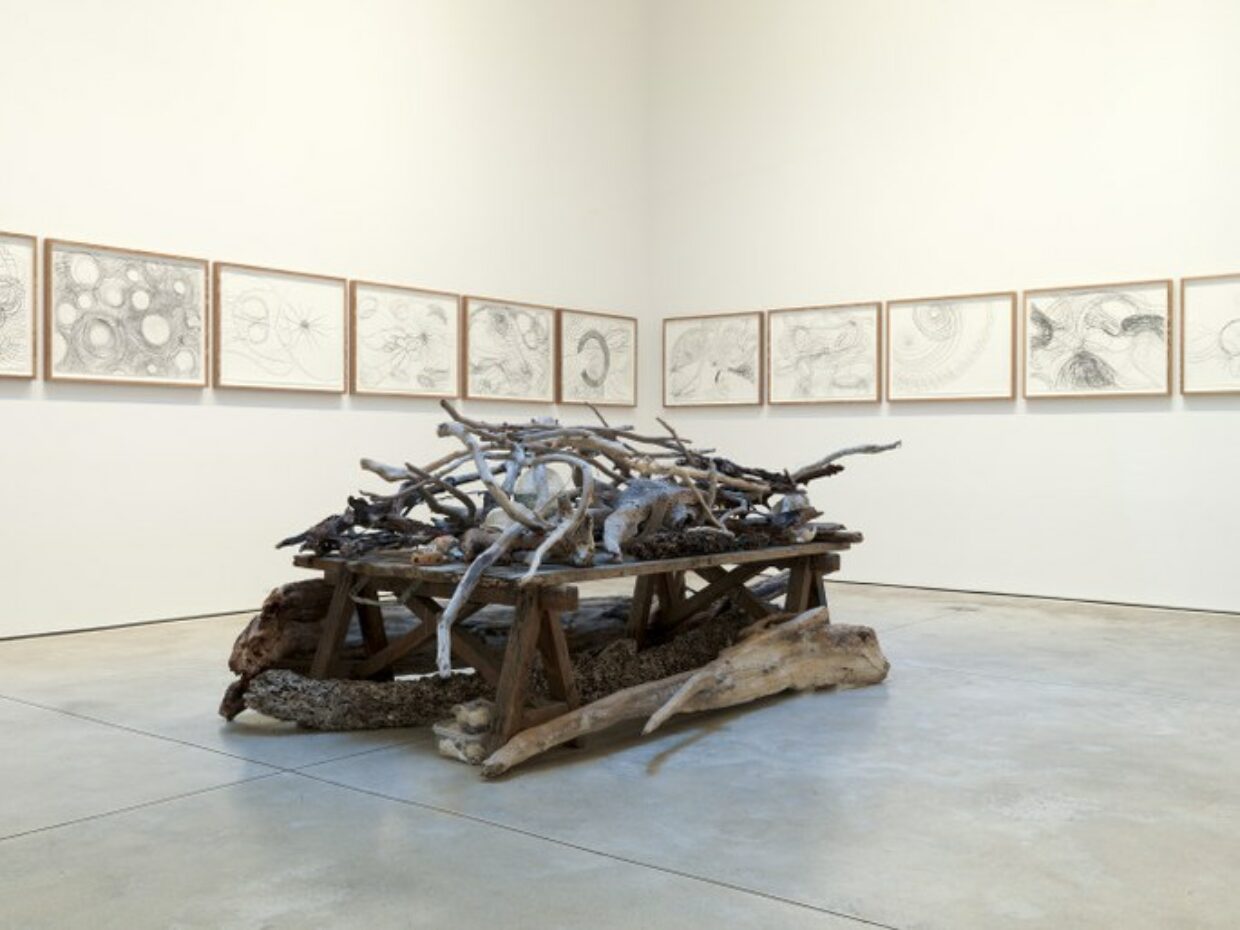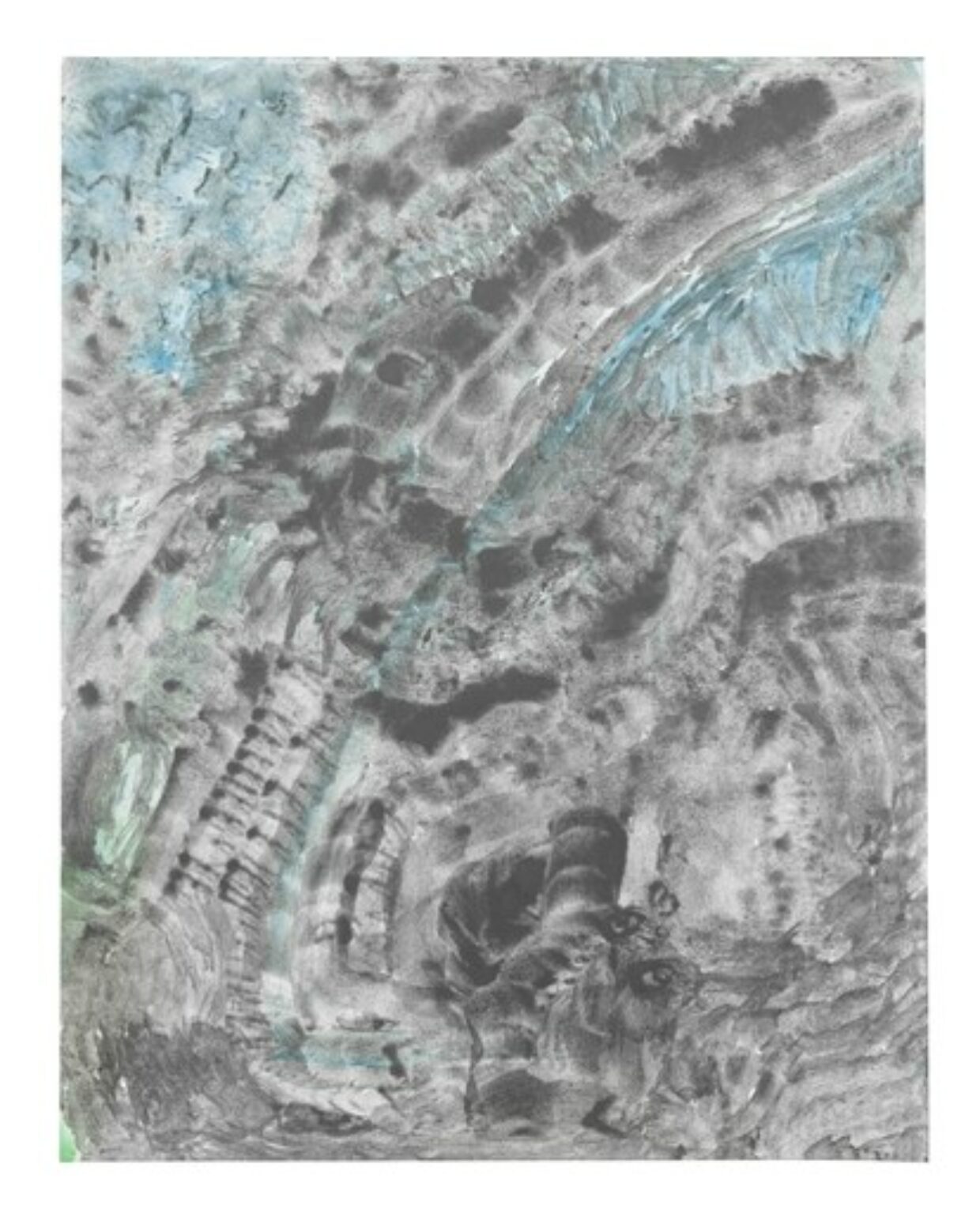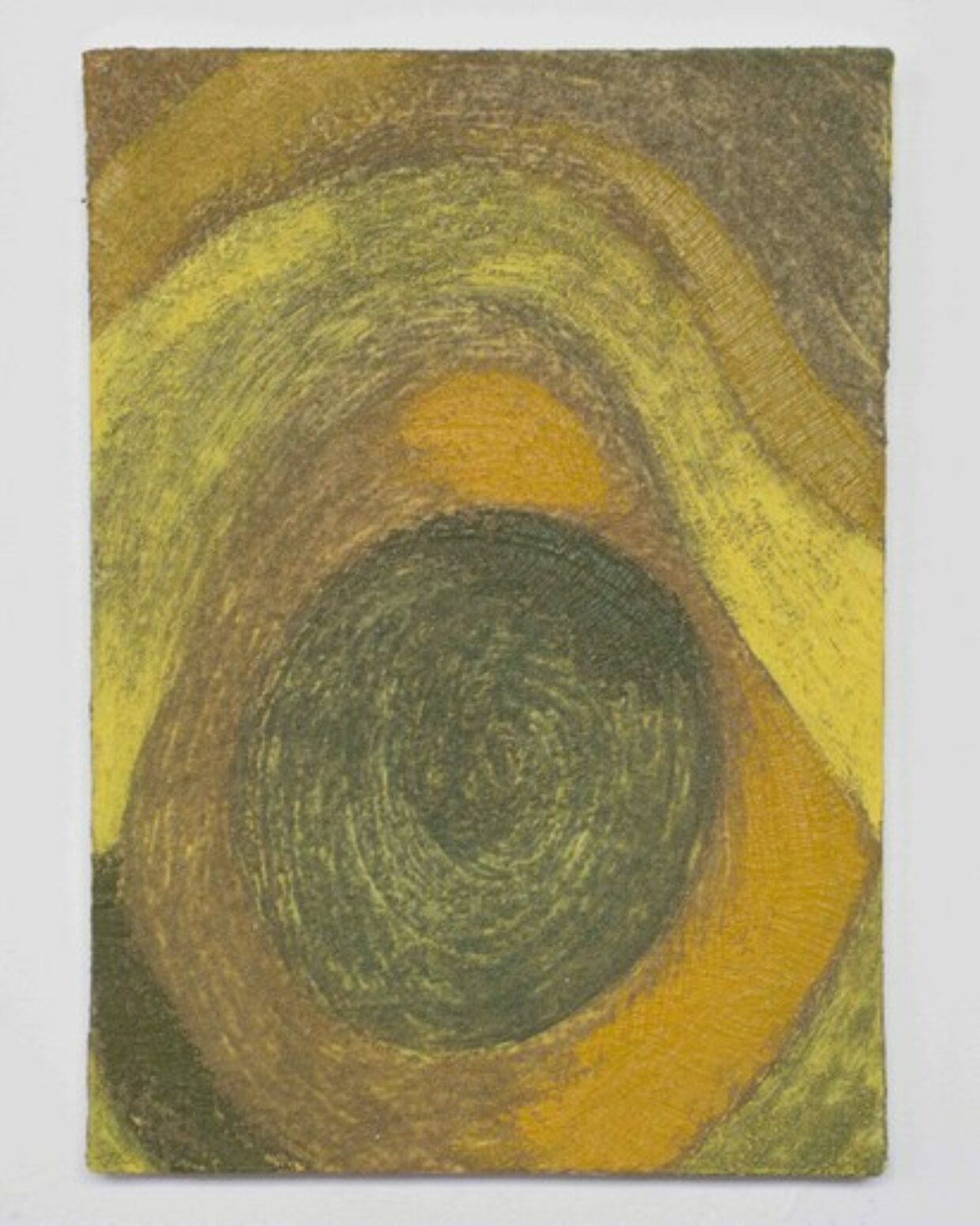Jack Pierson’s “onthisisland” Exhibition
Jul. 1, 2015
When Jack Pierson talks about his work, he speaks in several voices. One second he’s holding court like a world-famous artist giving an interview, the next he’s rattling off details about his process like a nervous painter, and the next he’s acting like a disinterested critic, picking apart his work. His intonation changes as he shifts between these personas. Likewise, Pierson’s art has has gone through frequent changes throughout his career. Over the past two decades, he has moved between making text-based sculpture, photography, photo-based painting, and abstract painting. The New York–based artist’s new show at Cheim & Read, “onthisisland,” is the next development in that process.
“I always thought I would escape a trademark thing,” Pierson said, when I told him that “onthisisland” seemed like an aesthetic departure. “Even when I was making it, I thought, ‘This is work to be discovered once I’m dead, but how about I just show what the fuck I feel like making right now?’”
It’s understandable why Pierson would say that. The watercolor paintings and graphite drawings in “onthisisland” would, for many artists, constitute a minor body of work. Most of the works in the show are just an inch or two wider than a sheet of printer paper. All 65 pieces are abstract, and very few of them are flashy. Even the oil-and-sand paintings, which feature thick smears of rose-pink and dashes of hot yellow, seem underplayed. They evoke the solitude of North Captiva, the island off the coast of Florida where Pierson made them. (Pierson was disappointed that the island’s name was included in an essay in the exhibition catalogue—he didn’t want people flocking there for vacation.)
Was “onthisisland” a response to Pierson’s four-month stay there? “Not in like a ‘What’s that color in the sunset?’ way, no,” Pierson said, adding that North Captiva allowed him to tune into a new mindset that he couldn’t find in New York. He continued, “I just came to work because that’s what I came to do. A new philosophy of mind was what I said I was going to do.”
These works on paper were done using an automatic style, though not one that was quite as heady as that of Surrealist automatist drawing, in which the sitter tries to do away with any sense of intentionality by allowing the psyche to take over. Here is how Pierson described his process: “Sit there; put down the paint; do a wash; do five fast washes; think, ‘Oh, that one’s nice, don’t fuck that one up, add something to that’; go back in, thinking, ‘Oh, this is perfect, don’t fuck that up, put that over here’; go back in 20 minutes like, ‘Oh, that wasn’t as good as I thought.’” He trailed off before telling me about the end of his process, perhaps pointing to the way that they are never quite finished.
The watercolors, Pierson said, “can’t exactly be damaged” because changes caused by the outside world would only make them better. “I always had this dream of making a kind of art that wouldn’t get fucked up by a footprint or a fingerprint, so that’s as close as I’ve gotten,” he said.
Meanwhile, the oil-and-sand paintings were made with the anticipation of potential damage. Pierson had been hanging his watercolors on his house’s stilts to let them dry, and he knew that if he did the same for his oil paintings, they would blow onto the beach. In response, he added sand to the paint. It was going to happen anyway. The smudgy drawings, he said, were a different story. “There were even a few that the dog walked across, and I didn’t even try to get rid of that,” he added.
The smudges made by the dog aren’t the only trace of the outside world in the show—one sculptural installation made of seashells, styrofoam, and driftwood sits in the middle of a room full of drawings. It also was made with an automatic process. “The first part of the day, I’d think, ‘Gotta exercise, gotta walk the dog, gotta multitask, gotta kind of meditate,’” Pierson said. “And while I’d do it, I’d collect shells and driftwood and drag it all back with nothing in mind, except having a really good piece of driftwood. I knew I was going to do something with it, and so, in this iteration of the show, that’s it. It looks like a table that was in front of the house. I guess it’s a sculpture.”
Collecting played an important role in his practice on the island (he also kept bringing back walking sticks for an unrealized sculpture), and it remains important when he is in New York City. Right now, in addition to “onthisisland,” Pierson has organized “Inside the Episode,” a show of artists without gallery representation, at Launch F18. (A Pierson-curated Yale MFA Photography show at Danziger Gallery just closed last week.) Pierson told me, “I like to go like, ‘This one’s good. Oh, this one’s much better than this one. Oh, look at this one when it’s next to this one.’” And why artists without any representation? “I didn’t have time to deal with bullshit from galleries,” he said.
Still, despite his reluctance to deal with galleries, and despite his temporary reclusiveness last year, Pierson is, in his own words, a “kind-of smart person” and he does pay attention to what his contemporaries are doing. We spoke about “the baggage of doing Painting with a capital P” and the way that all good painting these days has to involve photography. (“I feel like I covered that in ’95. Sorry you guys are just catching up now,” he said.) When asked whether the work in Cheim & Read is Painting, Pierson said no, “because I don’t think I’m up to it.”
Pierson isn’t into what he called the “We are entering history” mentality that painters like Wade Guyton, Albert Oehlen, and Christopher Wool have. In a way, he sides with Brice Marden, the Minimalist painter whose work he loves. He knows Marden’s abstract work isn’t ultra-contemporary, but that appeals to him. “I don’t feel like I’m advancing painting or in that conversation,” Pierson said with a half-smile. “The only new thing about these paintings is that they’re made today, and that’s weird.”
“onthisisland” will be on view at Cheim & Read Gallery in NYC from June 25 – August 29.
Source: ARTNEWS


